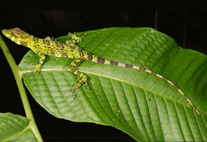Abstract
The oviparous female and male of the giant black bark aphid Pterochloroides persicae (Cholodkovsky) are described and illustrated for the first time. Notes on distribution, biology and host plants are presented.
References
Archangelsky, P.P. (1917) On the biology of Pterochloroides persicae Chol. Reports of Turkestan Entomological Station, Tashkent, 70pp.
Blackman, R.L. & Eastop, V.F. (2013) Aphids of the World's Plants: an Online Identification and Information Guide. Available on: http://www.aphidsonworldsplants.info/d_APHIDS_P.htm#Pterochloroides
Rakhshani, E., Talebi, A., Stary P., Manzari, S. & Rezwani, A. (2005) Re-description and biocontrol information of Pauesia antennata (Mukerji) (Hym., Braconidae, Aphidiinae) parasitoid of Pterochloroides persicae (Chol.) (Hom., Aphidoidea, Lachnidae). Journal of Entomological Research Society, 7(3), 59–69.
Stoetzel, M.B. & Miller, G.L. (1998) Aphids (Homoptera: Aphididae) colonizing peach in the United States or with potential for introduction. Florida Entomologist, 81, 325–345.
http://dx.doi.org/10.2307/3495923Talhouk, A.S. (1972) Field investigations on Pterochloroides persicae (Chol.) and Brachycaudus helichrysi (Kltb.), two common aphids of the almond tree in Lebanon. Anzeiger fur Schadlingskunde und Pflanzenschutz, 45(7), 97–103.
http://dx.doi.org/10.1007/BF01882093

